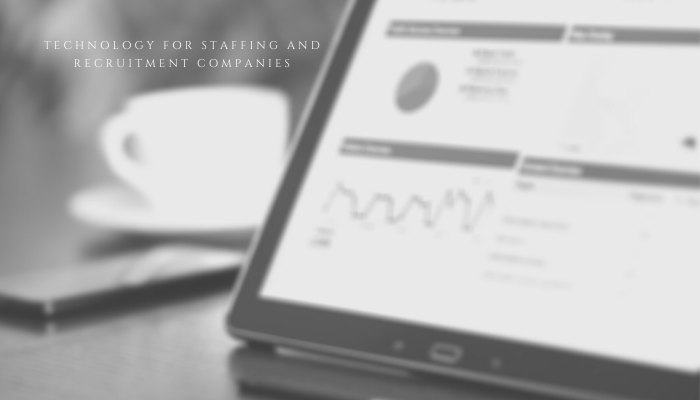For years, corporate America has championed the idea of generational harmony, offering feel-good training sessions about “bridging the gap” as if a few PowerPoint slides could smooth over decades of different experiences and perspectives.
But what if the real opportunity isn’t in erasing these differences but in leveraging them?
The workplace isn’t just a shared space, it’s a dynamic, multigenerational ecosystem. And the strongest teams don’t force unity; they harness diversity of thought, experience, and approach to drive innovation and results. Instead of smoothing over generational distinctions, it’s time to put them to work strategically. Here’s how:
1. Boomers Are Strategic Closers—Maximize Their Experience
The corporate world loves to treat Boomers like relics—outdated, slow-moving dinosaurs who “just don’t get it.” Big mistake. In reality, they bring unmatched decisiveness, experience, and execution skills.
- Use them as closers—Boomers bring authority and confidence to negotiations, making them invaluable in high-stakes moments.
- Leverage their expertise as mentors on their own terms—Rather than forcing them into one-size-fits-all mentorship programs, pair them with high-impact mentees and tie success to real results.
- Let them be the no-BS counterbalance to digital overthinking—When younger employees get lost in endless revisions and discussions, Boomers provide clear, direct action.
Boomers don’t need to be phased out—they need to be positioned as power players.
2. Gen X Is the Backbone—Stop Ignoring Them and Give Them the Leadership They’ve Earned
Gen X is corporate America’s most underutilized asset. They have spent years adapting, navigating both pre-digital and digital workplaces, and quietly holding organizations together. Gen X doesn’t need handholding. They need trust and autonomy.
- Empower them with decision-making roles—They don’t need another leadership course; they need a seat at the executive table.
- Recognize their adaptability—Having bridged multiple workplace transformations, they are the ultimate translators between traditional and modern work environments.
- Reward their resilience—Gen X has stayed the course without demanding the recognition or perks that younger generations expect. It’s time to acknowledge their value and recognize their contributions before they disengage entirely.
For pragmatic, steady leadership, look no further than Gen X.
3. Millennials Are Overwhelmed—Help Them Ruthlessly Prioritize for Impact
Millennials have been labeled as the “burnout generation” for a reason. They were raised to believe they could have it all—thriving careers, side hustles, perfect relationships, and avocado toast. Now, they’re trapped juggling ambition, financial pressures, and a rapidly changing work landscape.
- Streamline workflows—Reduce unnecessary meetings and encourage solutions through quick, decisive communication.
- Support smart efficiency—Millennials will automate anything they can—give them the tools to do it effectively.
- Shift the mindset on productivity—Encourage a results-driven approach rather than glorifying overwork.
Millennials are the workhorses of the modern economy. But if they don’t learn to focus, they’ll burn out before they ever break through.
4. Gen Z Thrives Under Pressure—Challenge Them to Step Up
Gen Z is digitally fluent, purpose-driven, and innovative—but they are also prone to perfectionism and high expectations. Instead of over-accommodating them, it’s time to challenge them. If you want to leverage Gen Z, make them earn their relevance.
- Assign them to high-stakes, fast-moving projects—They perform best in dynamic environments.
- Encourage real-world problem-solving—Create situations that push them beyond digital comfort zones, from in-person negotiations to leadership trials.
- Give them responsibility early—When held accountable, Gen Z talent quickly develops resilience and expertise.
Gen Z has immense potential, but they don’t need excessive handholding. They need opportunities to prove themselves.
5. Gen Alpha Is Already Here—Tap Into Their Disruptive Mindset
It may seem early, but Gen Alpha is already shaping the workforce as interns, freelancers, and next-gen disruptors. Growing up in an AI-powered world, they think, create, and solve problems differently.
- Let them experiment—Give them access to AI tools and emerging tech to let them test new business solutions.
- Encourage cross-generational collaboration—They’ll instinctively challenge outdated processes, long-held assumptions, and introduce fresh perspectives.
- Give them meaningful tasks—They don’t need busy work; they need real projects that let them contribute.
Gen Alpha isn’t waiting for permission to innovate—smart organizations will bring them into the fold now.
6. Forget “Culture Fit.” Create Controlled Generational Tension
Corporate culture often prioritizes “culture fit” over true diversity of thought. But the best teams aren’t built on perfect harmony; they thrive on constructive friction.
- Encourage debate—Boomers and Gen Z should challenge each other’s perspectives. Millennials should question legacy systems. Gen Alpha should push boundaries.
- Hire for dynamic teams, not comfort—Diversity of experience leads to innovation.
- See generational contrast as a strategic advantage—Tension, when managed well, leads to breakthroughs.
Final Thought: Stop Smoothing Differences—Leverage Them
The most effective teams aren’t trying to bridge gaps. They’re embracing the power of generational diversity, using each group’s strengths to build something greater.
It’s not about creating a one-size-fits-all workplace, it’s about making each generation’s strengths work together—prepare your team to compete and win.
Kelly Meerbott is an acclaimed TEDx and keynote speaker, author, podcast host, and award-winning certified leadership expert. With a unique trauma-informed approach and PTSD training, Kelly has transformed the leadership landscape for hundreds of C-suite and senior executives, and more than 400 high-ranking military officers. Her proven strategies help 90% of her clients overcome burnout, become more resilient, and achieve their goals. She holds multiple coaching certifications in Human & Organizational Transformation, Unconscious Bias, Leadership, cognitive therapy, and communications. Kelly’s insights on burnout are featured in her bestselling book From Burnout to Bliss and her latest release Meerbott’s Fables.
The post <strong>The Multigenerational Workforce Is a Powerhouse—If You Stop Trying to “Bridge the Gap”</strong> appeared first on HR Daily Advisor.
